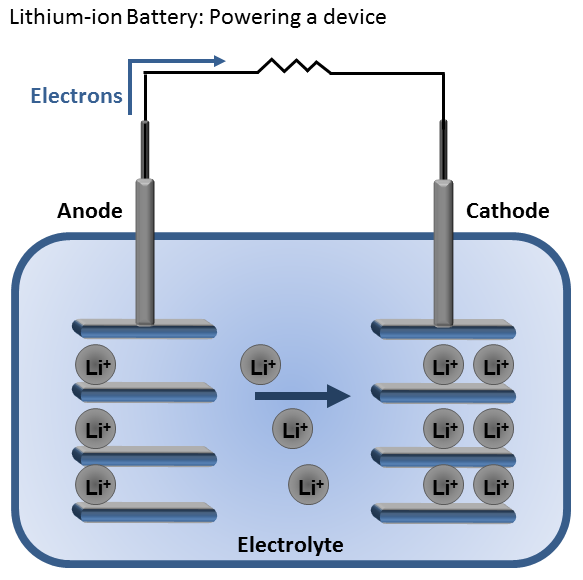This brings us back to the topic of metals as conductors and why they are so important to the structure of the universe.
First, we need to assume that metals are not self-organising systems but assistants to those that are. Whether this is on a biological, planetary, galactic or universe scale, metals are everywhere. They are obviously extremely important. But, important for what?
Let's follow the pattern.
Take, for example, one of the simplest of
energy delivering devices, a battery. We know what happens in practice when the positive and negative poles are linked through another device. The device receives electrical power - energy. This is the result of a flow of electrons being passed from atom to atom in a fixed direction. Those electrons, on their journey through the circuit are used to impart their energy to the device. The device, itself, is not a self-organising system, therefore only does what it is designed to do. It's a machine and its purpose has been pre-set by its designer.

As an alternative, here I will try to describe how this battery works in terms of patterns, instead of how it is technically taught in physics, as the movement of electrons. Although the concept of movement of electrons is universally accepted, there is no real explanation of how electron movement actually carries energy, it is simply assumed that it does and has become an accepted fact. But, perhaps it doesn't work like that at all.
The battery itself is a machine, pre-designed to carry out a particular function. It is designed to have an imbalance of energy between its two terminals. This unbalanced relationship makes one terminal negative (less energy) and the other positive (more energy). When these terminals are linked together, either directly, or through a device, the imbalance in energy between the terminals provides the battery with the opportunity to rebalance itself. It does this by moving electrons out of its anode, to balance the charge at the cathode side. For this it needs a good conductor, a metal, since air is a poor conducting medium.
Here is another way of looking at the same process.
The entire universe floats in an ocean of energy. Energy is everywhere, and what we call electrical power is not energy but the transfer of 'information' - of purpose, direction. The energy itself is pervasive and the devices we design are channels to direct that energy. From our point of view this may be a case of our not seeing the wood for the trees. Electrons may not, therefore, be carrying energy, but instead carrying information. The design of our machines is used to set a pattern to direct external energy, to instruct its purpose in how to use the pervasive universal energy to carry out work.
This may sound like a crazy, half-baked, brain-waving
theory, but perhaps this may have been the basic principle from which Nicola Tesla designed his power generators. Working from this position, instead of from the dogma of the 'Law of Conservation of Energy', would make above-unity devices the 'norm' not the impossible dream of conspiracy theorists and tinfoil-hat-wearing crazies.
Why do we consider heat to be energy at all?
The prime reason for this is that we use heat as a means to generate electricity or do mechanical work, and we use the resultant electricity to do more work, which in turn powers our machines and creates heat. This is a self-sustaining cycle, or perhaps delusion, that has fooled us into thinking that heat is energy. But what if heat isn't energy? What if heat were just the manifestation of the inefficient flow of energy? An energy waste product. This would put a completely different slant on how we approach the whole subject of energy transfer and how we could make use of it. Also, since we measure energy from our food exclusively in terms of heat (calories), it would automatically revolutionise how we view food as an energy source.
So, what is heat?
In the vacuum of space the 'energy' emitted by the sun does not contain any heat. In space that energy flows unimpeded until it comes into contact with a body with less energy. When this happens the energy flow is slowed down and this slow-down is manifested as heat.
Heat, therefore, represents the imbalance between the natural flow of energy in the universe when this flow is reduced. Heat is a measure of inefficiency of energy flow. It is not energy at all, but the result of the flow of energy being impeded. The more heat, the greater the imbalance is between the energy flow and its natural state. Heat is not energy, heat is a measure of inefficiency in energy flow.
|



